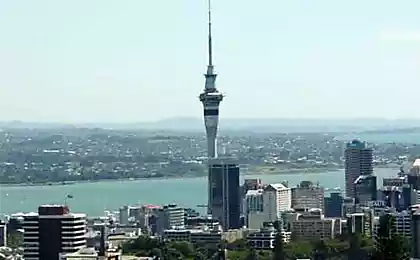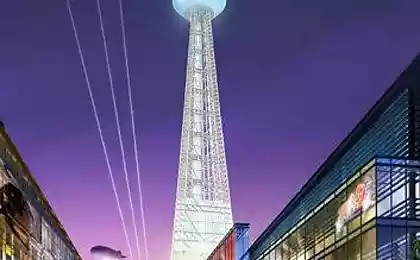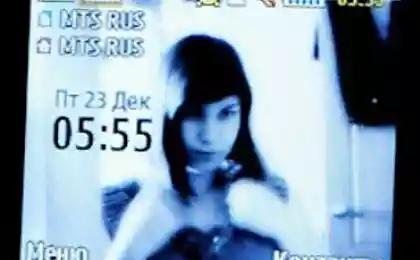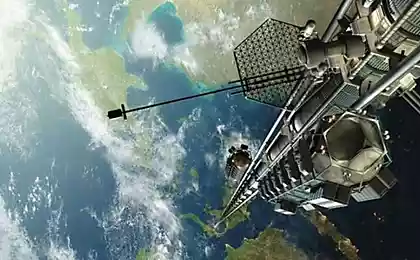668
5 reasons why space elevator between the Earth and its orbit will never be built
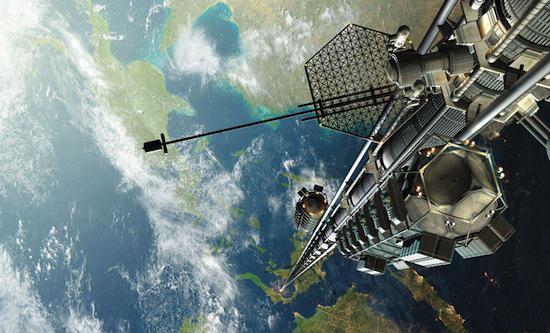
Because humanity though slowly, but still being developed in outer space, the question arose of sending into orbit necessities. Rockets are not suitable - they are too expensive in operation and harm the environment. Another opportunity - to build a space elevator that will connect the space with the Earth.
The height of this construction is 35 400 km. It is expected that this will be a heavy-duty cable, one end is fixed to the surface of the planet, and the other - at a fixed point above the geostationary orbit. As hoist rope climbs, carrying a payload. When lifting the load will be accelerated due to the planet's rotation, allowing a fairly high altitude send it outside the Earth's gravity.
It sounds like it is logical. However, there are some difficulties and making this method impractical at:
1. There is strong enough material for trosa

The load on the cable 000 can exceed 100 kg / m., As the material for its manufacture must possess extremely high strength to resist tensile and thus very low density. While this material is not - not even suitable carbon nanotubes, is now considered the most durable and elastic materials on the planet.
Unfortunately, the technology of their production is only beginning to be developed. While that is possible to obtain tiny pieces of material: the longest nanotubes, which have managed to create - a couple of centimeters in length and a few nanometers in width. Will there ever be drawn from this long enough rope, is still unknown.
2. Susceptibility to dangerous vibratsiyam

The cable will be susceptible to unpredictable gusts of solar wind - under its influence, he will bend, and this will adversely affect the stability of the lift. As stabilizers may be attached to the cable micromotors, but this measure creates additional difficulties in the maintenance facility. In addition, it can make progress on the rope special booths, so-called "climbers". Cable is likely to come into resonance with them.
3. The strength of Koriolisa

Cable and "climbers" are fixed relative to the Earth's surface. But with respect to the center of the Earth object will move at a speed of 1700 km / h at the surface and 10 000 km / h in orbit. Accordingly, the "mountaineers" have to make when you start this speed. "Climber" is dispersed in the direction perpendicular to the cable, and because of this cable is to swing like a pendulum. At the same time, a force trying to tear our rope from the Earth. The strength inversely proportional to the deflection of the rope and is directly proportional to the speed of lifting and weight. Thus, the Coriolis force prevents quick lift loads into geostationary orbit.
Since the Coriolis force can be controlled simply by launching simultaneously two "climbers" - from Earth and orbit, but then the force between the two loads will stretch the rope even more. As an option - painfully slow rise in the crawler.
4. satellites and space musor

Over the past 50 years, humanity has launched a set of objects in space - and not very useful. Or the builders will have to lift it all to find and clean (which is impossible, given the number of usable satellites, or space telescope), or to provide a system which protects the object from the collision. Cable - theoretically fixed, so any body rotating around the earth, sooner or later will face him. In addition, the speed in the collision will be almost equal to the speed of rotation of the body, so that the rope is caused so much damage. To maneuver the cable can not, and has great length, so collisions are frequent.
How to deal with, is not clear. Scientists talk about the construction of the orbital space lasers to burn trash, but that's just science fiction.
5. Social and Environmental riski

The space elevator could be the object of a terrorist attack. Successful sabotage operations inflict huge damage and may even bury the whole project, so that together with the elevator have to build around him and around the clock defense.
Environmentalists, however, believe that the cable is, paradoxically, may shift the earth's axis. The cable is tightly fastened in orbit, and any displacement of the top of its impact on the Earth. By the way, can you imagine what would happen if he suddenly cut short?
Thus, to implement such a project in the world is very difficult. And now the good news: it will work on the moon. The force of attraction on the moon is much less, and the atmosphere is virtually absent. The anchor can be created in the gravity field of the Earth, and the cable from the Moon will pass through the Lagrange point - so we get a communication channel between the planet and its natural satellite. Such a cable under favorable conditions, can pass into the orbit of the earth around 1,000 tonnes of cargo per day. The material, of course, require a heavy-duty, but nothing fundamentally new to invent not have to. However, the length of the "moon" lift should be about 190 000 km of the effect named Hohmann transfer orbit.
via factroom.ru
In Japanese universities conduct memorial services for animals that died during laboratory tests
Initially spire Empire State Building was designed as a mast for dirigibles
